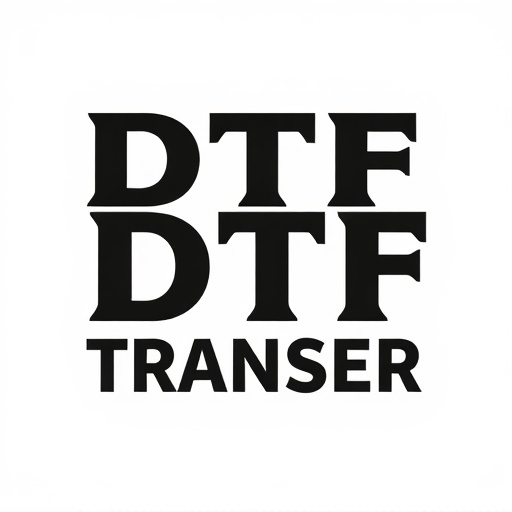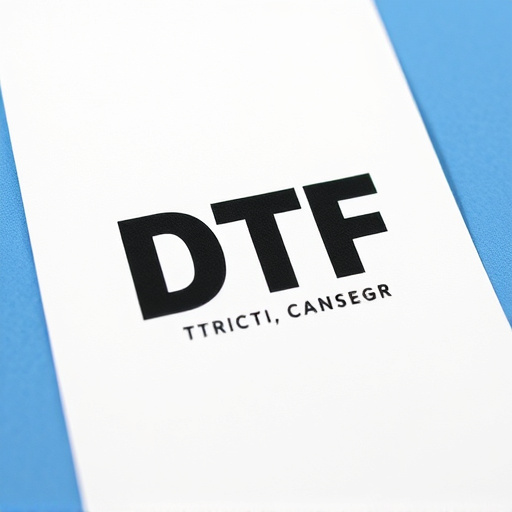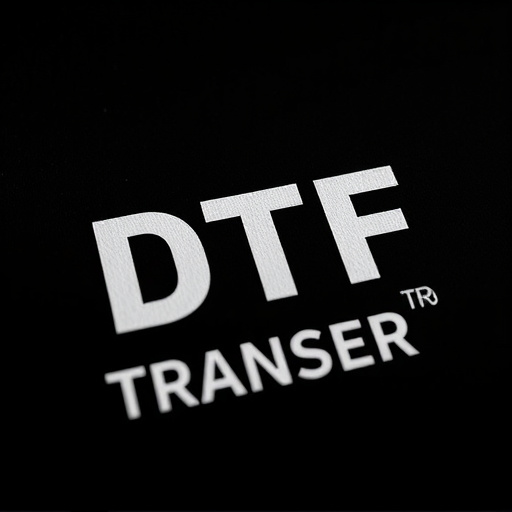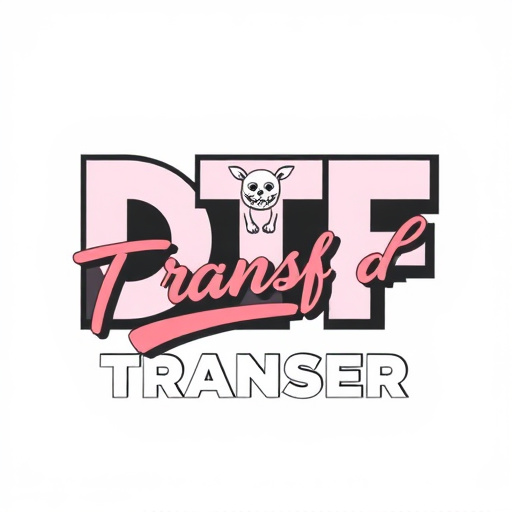Direct-to-Film (DTF) transfers are a cutting-edge printing process that offers unprecedented control and speed. Ideal for photography, film, and art reproduction, DTF technology preserves detail and color, making it perfect for archival materials and limited-edition prints. The meticulous preparation and precise transfer process ensure high-quality results, crucial for evaluating visual content across industries like cinematography and graphic design. Regular testing and advancements in UV-curable inks and digital printing promise to further enhance DTF's versatility and creative applications.
In the realm of film preservation and restoration, Direct-to-Film (DTF) transfers have emerged as a game-changer. This cutting-edge technology offers an innovative approach to capturing and replicating cinematic quality, ensuring films’ longevity. The article delves into the intricacies of DTF transfers, exploring their role in quality assessment and the steps involved in the transfer process. From pre-processing to evaluation metrics and future trends, we provide a comprehensive guide to understanding and mastering DTF printing, highlighting its significance for both preservationists and filmmakers alike.
- Understanding Direct-to-Film (DTF) Transfers: A Basic Overview
- The Role of DTF Transfers in Quality Assessment
- Preparing Your Film for DTF Transfer: Pre-Processing Steps
- Execution and Considerations During DTF Transfer Process
- Evaluating DTF Prints: Metrics for Quality Check
- Best Practices and Future Trends in DTF Transfer Technology
Understanding Direct-to-Film (DTF) Transfers: A Basic Overview

Direct-to-Film (DTF) transfers involve a unique and direct printing process where digital images are transferred onto film stock without the need for intermediate files or negatives. This method is particularly appealing in various industries, including photography, motion pictures, and art reproduction, as it offers several advantages over traditional printing techniques. By skipping the negative stage, DTF allows for faster production times, higher flexibility, and the ability to create high-quality prints with exceptional detail and color accuracy.
DTF transfers utilize specialized printers that can directly expose film emulsion using digital data, resulting in crisp images and precise control over exposure settings. This technology is especially valuable when dealing with archival materials, fine art reproductions, or creating limited-edition prints, as it ensures the original image quality remains intact while providing a fast and efficient workflow for producers and artists.
The Role of DTF Transfers in Quality Assessment

Direct-to-film (DTF) transfers have emerged as a significant tool in quality assessment for various media applications. This innovative process involves transferring images or data directly onto film, offering an accurate representation of the source material. DTF prints are highly sought after due to their exceptional detail retention, vibrant colors, and ability to capture intricate patterns. These features make DTF transfers ideal for evaluating and comparing visual content, especially in fields like cinematography, photography, and graphic design.
The role of DTF transfers extends beyond simple comparison. They serve as a benchmark for measuring the quality of subsequent prints or digital displays. By directly replicating the original content onto film, DTF provides a reliable standard against which to assess resolution, contrast, and overall visual fidelity. This is particularly crucial in ensuring consistent high-quality outputs in large-scale productions or when dealing with vintage media that requires restoration and preservation.
Preparing Your Film for DTF Transfer: Pre-Processing Steps

Before attempting a direct-to-film (DTF) transfer, proper preparation is key to achieving high-quality results. The first step in this process involves pre-processing the film to ensure it’s ready for printing. This includes cleaning the film to remove any dust, dirt, or debris that could affect image quality. A soft brush or specialized cleaning solutions can be used for this purpose. It’s also crucial to inspect the film for any damage, such as scratches or tears, and make repairs as necessary.
Additionally, adjusting the film’s orientation and framing is essential. This might involve cropping or trimming the film to ensure it aligns correctly with the desired print size and aspect ratio. Proper lighting conditions during this pre-processing stage are vital to avoid introducing new artifacts or distortions. These initial steps lay the foundation for a successful DTF transfer, ensuring that the final prints capture the essence of the original film with minimal issues.
Execution and Considerations During DTF Transfer Process

The Direct-to-Film (DTF) transfer process involves several critical steps to ensure high-quality prints. It begins with preparing the film source, which could be a negative or positive, ensuring it’s clean and free from any damage. The next step is the key: accurately aligning and exposing the film onto the print medium, whether it’s paper or plastic. This requires precise control over light intensity and duration to match the original film’s characteristics perfectly.
Considerations during DTF transfer include managing heat to prevent warping or fading, especially for delicate materials. The environment must be controlled to maintain optimal conditions throughout the process. Additionally, color accuracy is paramount; calibrating equipment and using high-quality filters can help achieve a true representation of the original film’s hues. Regular testing and maintenance of DTF printing machines are also essential to maintaining consistent results.
Evaluating DTF Prints: Metrics for Quality Check

Evaluating DTF Prints requires a meticulous process to ensure optimal quality. Key metrics include resolution and clarity of image details, color accuracy, contrast levels, and overall grain structure. High-resolution imaging equipment is essential for precise analysis, allowing for the detection of even subtle anomalies.
For comprehensive quality checks, several techniques are employed. These involve comparing DTF Prints against original source materials, utilizing specialized software to analyze pixel density and color profiles, and conducting visual inspections under controlled lighting conditions. The goal is to identify any deviations from the original content, ensuring that the DTF Transfer maintains the integrity and aesthetic appeal of the source film.
Best Practices and Future Trends in DTF Transfer Technology

The best practices in Direct-to-Film (DTF) transfer technology involve ensuring precise color accuracy and sharp detail reproduction. This requires meticulous calibration of printing equipment, use of high-quality films and inks, as well as controlled environmental conditions to minimize moisture and particle contamination. Additionally, implementing a robust quality control process, including regular testing against established industry standards, is vital for maintaining consistent DTF print quality.
Looking ahead, the future trends in DTF transfer technology promise even greater advancements. Emerging technologies like UV-curable inks offer improved durability and vibrancy, while digital printing methods allow for on-demand production and more flexible design options. Furthermore, integration of advanced imaging techniques could lead to higher resolution prints and enhanced special effects, opening up new possibilities for creative applications in various industries, from graphic arts to signage and packaging.














